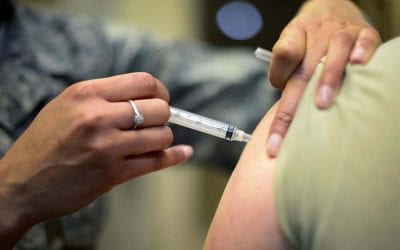
We all know that “driving defensively” means reducing the risks of driving by anticipating dangerous situations on the road. Packing defensively means packing your carry-on(s) to reduce problems at security, and the risks of breakage or lost or stolen luggage by anticipating potential carry-on woes.Security concerns at TSA are on the rise, especially with the recent “panty-bomber” escapade.
While the US national threat level is “yellow,” it was recently raised to “orange,” the next to the highest level, for all domestic and international flights. As a result, security will be tougher, and you may be subject to random gate checks, even for domestic flights, in the days to come.
At airport security, I’ve seen passengers’ belongings confiscated leading to hand searches of their bags, and during those searches, I’ve seen their belongings manhandled and strewn all over a filthy floor.
Most travelers have heard horror stories of lost, stolen, and severely damaged luggage from friends, neighbors and business acquaintances, or have experienced it for themselves.
We’ve read and heard complaints from airline and cruise passengers who found out the hard way, airlines and cruise lines severely limit their liability for passengers’ belongings, especially valuables, electronic gear, and breakables. Even if directly responsible for lost or damaged cameras, iPods, or other valuables, they don’t “pay up.”
Recently, actress Cybill Shepherd’s son was in the news. He was charged with stealing from airplane passengers’ carry-ons during a flight from San Francisco to Philadelphia. I assure you this scenario is repeated all too often.
Here are some of my defensive packing tips.
• Pack in layers and put anything with wires (electronic gear, etc.) in one layer only. This permits x-ray security agents to easily identify your belongings. Stacking such gear makes it impossible for an agent to tell what’s in your bag and will likely result in a hand search.
• Pack all small items in your carry-ons in see-through bags to maintain orderliness and make it easy for security agents to identify your belongings in x-ray, secondary, and gate searches. (I pack everything in my carry-ons and checked luggage in see-through bags, with fragile items in padded bags.) This makes it easy to keep track of my belongings when removed by security from my luggage during a hand search, or by me in my hotel room.
• Never pack items with loose wires in your luggage, whether in bags or not. They often appear in x-ray enough like bombs or detonation devices to engender a hand search of your bags. Bundle and tie the wires.
• Know TSA’s rules for what’s permitted and what’s not, and the liquid/gel rules for carry-ons, and follow them. Don’t try to sneak anything past security. It’s not worth it.
• If one of your packing bags was screened for explosives using a wipe, replace the bag if disposable, or at least thoroughly clean it with detergent before you use it again. Sometimes the wipes leave a chemical residue on your bag, which can give you trouble at the next inspection.
• Lock your carry-ons to prevent in-flight theft but wait until you board the plane. Locked carry-ons slow security and upset security agents, especially at the gate.
• Know the size limitations for carry-ons for the airlines on which you’re traveling. The airlines are finally cracking down on oversized carry-ons. I’ve recently seen this in the US and Europe. In Europe, carry-ons are often weighed. You don’t want to have to check-in your carry-ons containing equipment and valuables for which the airlines refuse liability.
• To prevent travel problems from lost, stolen or damaged checked-in luggage, choose the belongings you pack in your carry-ons carefully, as you only have a small finite space in them (personal bag and carry-on). I pack all my valuables, laptop/computer gear, camera/camera gear, cash and jewelry, if any, all breakables, a complete change of clothes in case of lost, stolen or delayed checked-in luggage, toilet articles, and all medications in my carry-ons. Take anything in your carry-ons you can’t do without, or can’t afford to loose.
• With airlines monitoring the size of carry-ons, and security changing carry-on rules at a moments notice, you may need additional space, and a back-up plan. (After the “panty-bomber” episode, to help fulfill the security requests of the US, some countries like Canada, banned all carry-on bags for travelers flying to the US, some whom were already away from home and depending upon them for several weeks.)
I always have a “third” carry-on with me, which security and the airlines don’t limit; a photographer’s vest. Even if I wasn’t a photographer, I’d wear the vest while traveling. My strong, lightweight, breathable vest can hold a lot of stuff, in a multitude of zippered and snap pockets. It’s extremely convenient on the plane by keeping items I use aloft, “close to my chest.”
After many years working in corporate America as a chemical engineer, executive and eventually CFO of a multinational manufacturer, Ned founded a tech consulting company and later restarted NSL Photography, his photography business. Before entering the corporate world, Ned worked as a Public Health Engineer for the Philadelphia Department of Public Health. As a well known corporate, travel and wildlife photographer, Ned travels the world writing about travel and photography, as well as running photography workshops, seminars and photowalks. Visit Ned’s Photography Blog and Galleries.

